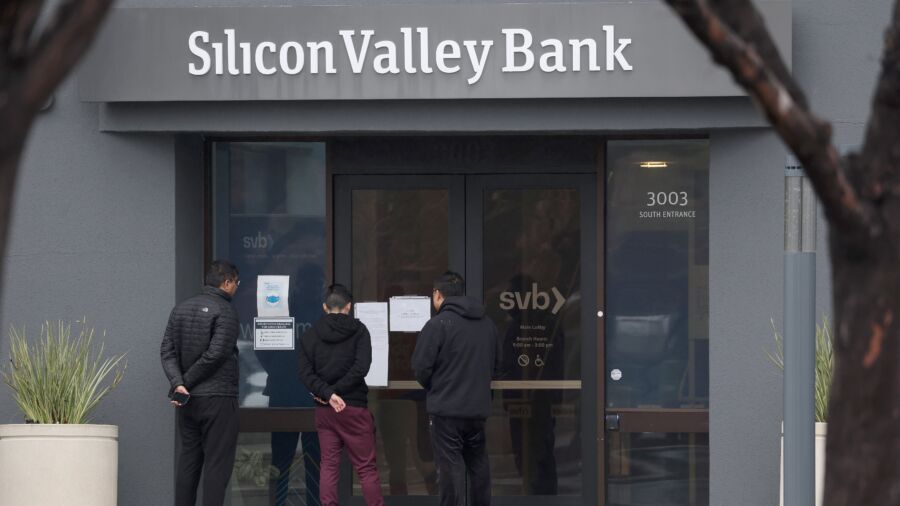For the first time since the financial crisis of 2008–09, confidence in the U.S. banking system has eroded as three major banks shuttered in one week: Silvergate, Silicon Valley Bank (SVB), and Signature Bank. As experts brace for the next domino to fall in the unfolding turmoil, the federal government and the Federal Reserve are trying to prevent a contagion effect that could devastate the broader economy.
But will these efforts be enough?
In the fallout of SVB and Signature Bank, the public is still trying to wrap its collective head around what exactly happened to these financial institutions. While there were several reasons for SVB’s collapse, interest rates played a considerable factor.
Most of SVB’s clients were venture capital firms, tech companies, and Silicon Valley executives. The bank attracted new clients by offering higher deposit rates, funded by acquiring long-term and high-yielding bonds. However, SVB quickly became vulnerable to the Fed’s quantitative tightening initiative, eroding the valuation of those bonds and causing widespread investment losses.
Balance-sheet problems became ubiquitous as the entity needed to maintain sufficient levels of deposits on hand and allocate a high percentage of its capital to cover its higher rates. Fidelity also noted that SVB produced “a reputation for having non-as-strict lending standards,” meaning that the bank may have offered loans to risky venture-backed firms that had deposits at SVB. Obtaining capital became a more challenging feat since a rising-rate climate had decimated the tech sector.
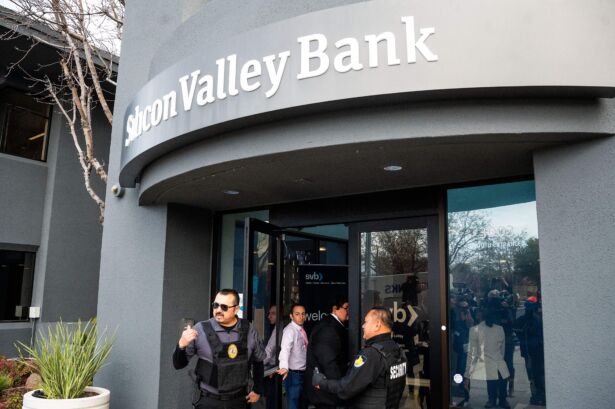
“There’s an old adage that says the Fed tightens until something breaks,” Jurrien Timmer, director of global macro at Fidelity, said in a note. “It looks like we have a sense of what is breaking during this Fed cycle.”
When these balance-sheet problems became apparent, panic began spreading across social media. House Financial Services Committee Chairman Patrick McHenry (R-N.C.) called it “the first Twitter-fueled bank run.”
But was the same true of Silvergate and Signature Bank?
Silvergate Capital Corp., a cryptocurrency-focused bank with $11 billion in assets, announced on March 8 that it would wind down operations and liquidate the bank, citing “recent industry and regulatory developments.”
Crypto-focused Signature, in the third-largest bank failure in U.S. history, suddenly collapsed after customers withdrew more than $10 billion in deposits on March 10. Depositors were spooked by what transpired at SVB, according to Barney Frank, the former congressman who served as a director at Signature Bank.
“We had no indication of problems until we got a deposit run late Friday [March 10], which was purely contagion from SVB,” he told CNBC.

“I think part of what happened was that regulators wanted to send a very strong anti-crypto message. We became the poster boy because there was no insolvency based on the fundamentals.”
Although there had been widespread fears that First Republic would be the next bank to fall, the company confirmed that it had access to more than $70 billion in unused liquidity, after receiving support from the Fed and JPMorgan Chase. The stock tumbled by more than 60 percent on March 13 but rallied by as much as 50 percent the next day.
2008 All Over Again?
A chorus of economists likened the current situation to what occurred in 2008, with financial institutions taking on too much risk amid an environment of strict regulations and loose monetary conditions.
But not everyone is convinced that it’s 2008 all over again.
Mike Coop, chief investment officer at Morningstar Investment Management, believes that the situation is vastly different because the big banks are “in much better shape than SVB.” These might be isolated cases rather than deteriorating systemwide conditions, he noted.
In the aftermath of the financial crisis of 2008–09, the federal government and regulators ushered in significant structural changes in the banking sector, such as mandating the banks to maintain larger capital amounts to serve as buffers. Moreover, major banks face greater scrutiny by regulators, meaning that they’ll diversify their funding and lending sources to include a wide range of industries.
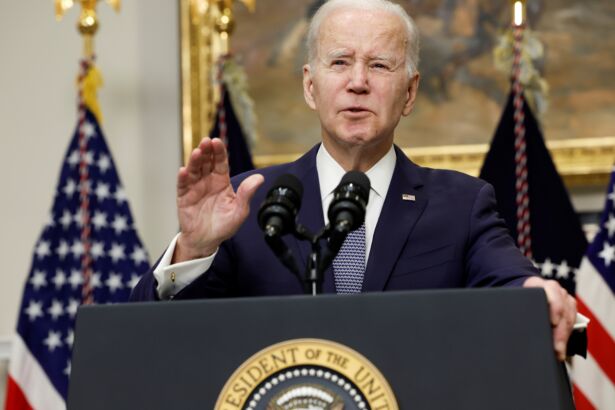
“In short, the collapse of SVB is likely to signal increased cost of debt and reduced access to capital for start-ups and technology companies, after a once in a generational boom,” Coop wrote.
Former President Donald Trump—in an all-caps social media Truth Social post last weekend—compared the chaos to 1929, warning that banks are already beginning to fail because of President Joe Biden’s economic policies.
“Joe Biden will go down as the Herbert Hoover of the modern age. We will have a Great Depression far bigger and more powerful than that of 1929. As proof, the banks are already starting to collapse!!!”
US Government Intervenes
The Fed, Treasury Department, and the Federal Deposit Insurance Corp. (FDIC) issued a joint statement late on March 12 that outlined a plan to protect depositors and stem systemic contagion concerns.
According to the plan, the FDIC’s Deposit Insurance Fund (DIF) would cover depositors, even as about 90 percent were uninsured because of the agency’s $250,000 limit on guaranteed deposits. The U.S. central bank would also create a new bank term funding program to shield institutions from the market instability of the SVB failure by extending loans of up to one year to banks, credit unions, and savings associations.
In order to qualify, these financial institutions need to pledge high-quality collateral, including Treasurys and mortgage-backed securities. The Treasury also would provide a $25 billion backstop from its Exchange Stabilization Fund to offset any possible losses.
“This action will bolster the capacity of the banking system to safeguard deposits and ensure the ongoing provision of money and credit to the economy,” the Fed said in a statement. “The Federal Reserve is prepared to address any liquidity pressures that may arise.”

Officials rejected the notion that the U.S. government is bailing out these banks, with Treasury Secretary Janet Yellen telling CBS’s “Face the Nation” that “we’re not going to do that again.”
“But we are concerned about depositors and are focused on trying to meet their needs,” she said. “We want to make sure that the troubles that exist at one bank don’t create contagion to others that are sound.”
Biden also assured the public on March 13 that taxpayers wouldn’t incur any losses since the costs of these programs would originate from what banks pay into the DIF.
Blame ESG or Trump?
While speaking in prepared remarks at the White House on March 13, Biden assured Americans that the U.S. banking system is safe, confirming that depositors would be protected but management and investors wouldn’t. He also took a moment to blame Trump and his administration for rolling back regulations in the landmark 2010 Dodd-Frank bill.
“During the Obama–Biden administration, we put in place tough requirements on banks like Silicon Valley Bank and Signature Bank, including the Dodd-Frank Law, to make sure the crisis we saw in 2008 would not happen again,” the president said. “Unfortunately, the last administration rolled back some of these requirements.”
Other Democratic leaders have touted the same idea, citing the Trump-era Economic Growth, Regulatory Relief, and Consumer Protection Act, which eased restrictions on small- and medium-sized banks, such as SVB and Signature.

“As to the ‘how could this happen’ concern, it’s clear that the efforts by former president Donald Trump and [House Speaker] Kevin McCarthy [R-Calif.] … to pass the ‘Reform Act’ in 2018 inoculated Silicon Valley Bank from stress tests and regulation that would have prevented this crisis,” Rep. Eric Swalwell (D-Calif.) said in a statement. “This is a lesson: the weakening of bank regulations for small and medium-sized banks allowed this mismanagement to go unchecked.”
However, the Trump administration’s reforms received bipartisan support, including 33 House and 17 Senate Democrats.
Some prominent Republicans are asserting that these recent events were caused by overregulation and management concentrating on a diversity, equity, and inclusion (DEI) agenda.
“This bank, they’re so concerned with DEI and politics and all kinds of stuff, I think that really diverted from them focusing on their core mission,” Florida Gov. Ron DeSantis, a Republican, told Fox News on March 12.
“We have a massive federal bureaucracy, and yet they never seem to be able to be there when we need them to be able to prevent something like this.”
Samuel Gregg, a distinguished fellow at American Institute for Economic Research (AIER), agrees that the management focused on DEI and ESG (environmental, social, and governance) initiatives rather than their core responsibilities. This, in addition to market developments, higher interest rates, and bad strategic decisions, contributed to the SVB debacle.
“Maybe people will start to grasp that when some of their bank’s chief risk assessors are busy promoting DEI and other such initiatives, it is a sound indicator that they should withdraw their capital from that bank—immediately,” Gregg said in an email.
Whatever the cause, observers agree that markets were blindsided by what transpired, especially after it was found that KPMG proffered a clean bill of health in its audit reports of SVB and Signature days before they failed. Reports state that KPMG will be heavily scrutinized by regulators at the Securities and Exchange Commission and the Public Company Accounting Oversight Board.
No Shortage of Opinions
Bill Ackman, founder and CEO of Pershing Square Capital Management, celebrated the government’s response, stating in a tweet that the officials “sent a message that depositors can trust the banking system.”
The hedge fund manager suggested that taxpayers would have been left on the hook without these actions and that the national system of community and regional banks would be “toast.”
But critics argue that this will foster an environment of moral hazard—i.e., when one party is incentivized to take on risk because it won’t bear the costs of that risk—and encourage more risky behavior on the part of depositors.
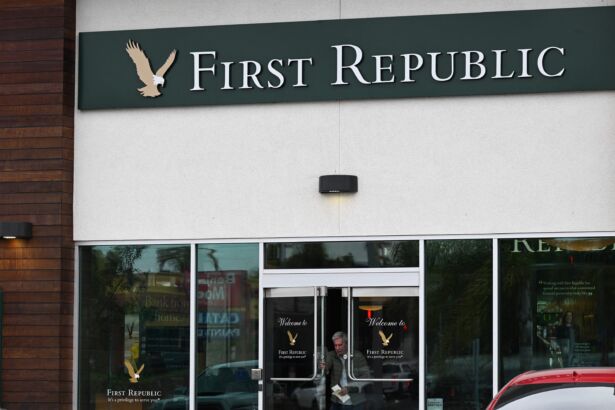
Peter Schiff, chief economist and global strategist of Euro Pacific Capital, contends that this is “yet another mistake” by the central bank and U.S. government that will “lead to even greater instability in the banking system and larger future losses.”
“The bailout means depositors will put their money in the riskiest banks and get paid higher interest, as there’s no downside risk,” he wrote in a tweet. “So all banks will take on greater risks to pay higher rates. So in the long-run, many more banks will fall, with far greater long-term costs.”
As the United States attempts to move on from the string of bank failures, Frank, who was a co-author of the Dodd-Frank legislation while in Congress, thinks the FDIC should boost the $250,000 cap for business clients.
“When you are talking about business deposits, you’re talking about payroll for someone who is making the medium income,” he told The Wall Street Journal on March 14. “It shouldn’t be a one-off; they should do this as a policy change.”
Blake Harris, founder and managing partner at Blake Harris Law, believes that policymakers should consider requiring higher capital reserve ratios comparable to Swiss banks. Although he thinks more specialized banks are most susceptible to contagion, Harris also noted that every other bank faces risks.
“The banks that are least at risk are Swiss banks because they have some of the highest capital reserve ratios,” he told The Epoch Times. “These banks are going to see a massive wave of capital come to them.”
Indeed, the concern surrounding bigger banks being affected by these collapses may be justified. Reuters reported that mutual funds managed by BlackRock, Fidelity, and Morgan Stanley were the most exposed to regional bank failures.
As to the diagnosis of the recent bank failures, a growing number of economists are pointing the finger at the Fed.
Steve Hanke, a former economic adviser to President Ronald Reagan, said in an interview with The Epoch Times that the central bank’s contractionary policies enabled the current situation.
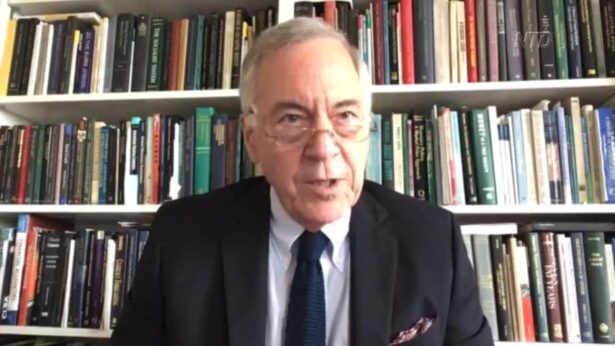
University, speaks about cryptocurrency in an interview with NTD. (Screenshot/NTD)
The Fed’s policy of quantitative tightening involves reducing the size of its balance sheet by selling off assets, which reduces the amount of money in circulation. While this policy is intended to curb inflationary pressures, Hanke, a professor of applied economics at Johns Hopkins University, thinks it has gone too far.
“As I anticipated, this slowdown in the money supply growth has been so massive that it has caused significant problems in the banking sector,” he said.
For the first time since the central bank started sharing this data, the U.S. money supply declined for two consecutive months: negative 1.05 percent in December 2022 and negative 1.73 percent in January.
The Fed balance sheet also has contracted for four straight months, including a 5.5 percent drop in February to less than $8.39 trillion, which is still about double the pre-pandemic level.
What Now?
Experts think the Federal Reserve will announce either a quarter-point rate increase at next week’s Federal Open Market Committee policy meeting or pause its tightening campaign.
According to the CME FedWatch Tool, investors have mostly penciled in a 25-basis-point increase to the benchmark federal funds rate, lifting the target range to 4.75 to 5 percent. However, in a March 12 note, Goldman Sachs economists said the financial institution no longer anticipates that the rate-setting committee will boost the rate on March 22; the firm’s economists still expect quarter-point boosts in May, June, and July.
The case for pausing rate moves might have been further supported by the February Consumer Price Index report, which shows that the annual inflation rate eased to 6 percent. Looking ahead to next month’s report, the Cleveland Fed’s Nowcasting model estimates a 5.2 percent print.
But while investors are cheering a possible slowdown in tightening, former Treasury Secretary Larry Summers conceded that he “would be disappointed” if the Fed stopped its inflation-fighting campaign.

“I certainly think the Fed needs to stay focused on the inflation challenge,” Summers told CNN on March 13. “That is really what the American people have said, it is what they see as our principal economic challenge. And I think it’s what history teaches us that if we don’t keep inflation controlled, we ultimately have much larger recessions and much more suffering.”
That said, a recent downgrade may suggest that more needs to be done to elicit confidence in the banking system.
Despite the government’s interventions, Moody’s Investors Service still slashed its outlook on the U.S. banking system, to negative from stable. The credit ratings agency identified a litany of concerns, including fears that other banks such as SVB and Signature would be “more sensitive to depositor competition or ultimate flight, with adverse effects on funding, liquidity, earnings and capital.”
Moody’s wrote in a report, “We have changed to negative from stable our outlook on the U.S. banking system to reflect the rapid deterioration in the operating environment following deposit runs at Silicon Valley Bank (SVB), Silvergate Bank, and Signature Bank (SNY) and the failures of SVB and SNY.”
From The Epoch Times

